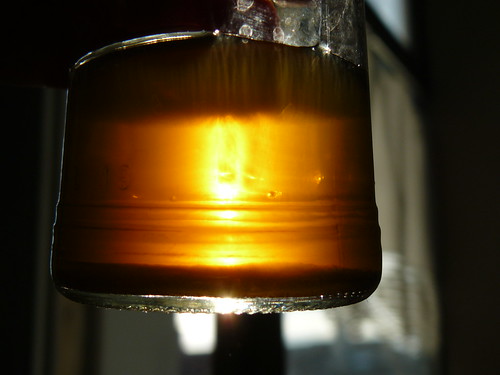x a n t h i u m * s t r u m a r i u m
before dyeing with the plant that I'm going to show you, I had never heard about it, nor I had never noticed it anywhere. Hubby and I spotted this when we had a long walk in town, a couple of weeks ago. During that walk, we had spotted & picked other plants to dye with.
this plant is called Xanthium strumarium. It is a native to both Eurasia and North America. It is a common summer annual, about 2 to 4 feet tall. It is a monoecious plant. Xanthium strumarium belongs to the Asteraceae family.
in Greek, ξανθοσ (xanthos) means yellow, yellowish, greenish, and some say the name Xanthium was given from the ancient name of some plant, the fruit of which was used to dye the hair yellow (blond).
in Latin, struma means scrofula so that strumarium would mean of or pertaining to the scrofula, that leaves retractile and unsightly scars, and the epithet might then refer to the shape of the fruits.as usual we had mordanted our fibers with alum. I do think the results are very satisfactory ... the dye was well absorbed even on cotton & linen. Very interesting indeed, as this plant grows on wastelands & such. If you wonder which part of the plant we used, we only picked & used the fruits, these spiky little things I've taken a photo of, with the dyed fabrics.
this plant is called Xanthium strumarium. It is a native to both Eurasia and North America. It is a common summer annual, about 2 to 4 feet tall. It is a monoecious plant. Xanthium strumarium belongs to the Asteraceae family.
in Greek, ξανθοσ (xanthos) means yellow, yellowish, greenish, and some say the name Xanthium was given from the ancient name of some plant, the fruit of which was used to dye the hair yellow (blond).
in Latin, struma means scrofula so that strumarium would mean of or pertaining to the scrofula, that leaves retractile and unsightly scars, and the epithet might then refer to the shape of the fruits.as usual we had mordanted our fibers with alum. I do think the results are very satisfactory ... the dye was well absorbed even on cotton & linen. Very interesting indeed, as this plant grows on wastelands & such. If you wonder which part of the plant we used, we only picked & used the fruits, these spiky little things I've taken a photo of, with the dyed fabrics.




your dyers crown has just turned golden my friend
ReplyDeletewe will have so much fun at the summer dyeing party
Gorgeous! I love the idea of dyeing with weeds/wasteland flowers. It makes me wonder what could be done with some of the problem weeds were have here in the UK, such as Himalayan Balsam (Impatiens glandulifera) which is now tending to overwhelm our riverbanks. Or Japanese Knotweed.
ReplyDeleteBonjour,
ReplyDeleteJe découvre ton blog qui est vraiment une pure merveille. Tes photos m'ont tellement donné envie, que je me suis procuré un livre sur le sujet (la teinture au naturel de Jackie Crook). Cependant dans tes articles, tu nous parles seulement d'alun en tant que mordant. Est-ce que tu rajoutes quand même de la crème de tartre ou autre assistant ?
Merci pour ta réponse